Author:
-
Position:
General Manager of Foreign Trade Department, Taojun Refrigeration -
Professional Experience:
Engaged in international trade within the refrigeration industry since 2004.
Expert in brand strategy and omni-channel marketing, having led three multi-million yuan projects that boosted brand exposure by over 200%.
-
Core Competencies:
Proficient in data analysis and user growth strategies.
Skilled in SEO/SEM and social media management tools.
Experienced in cross-departmental collaboration and team leadership.
-
Philosophy:
"Data-driven decisions, creativity-powered branding." Committed to achieving business value and user experience excellence through refined operations. -
Vision:
Eager to collaborate with partners to explore emerging market opportunities and set industry benchmark cases.
Contact Us to Find More Products
Never Underestimate Wire Tube Condensers’ Green Impact
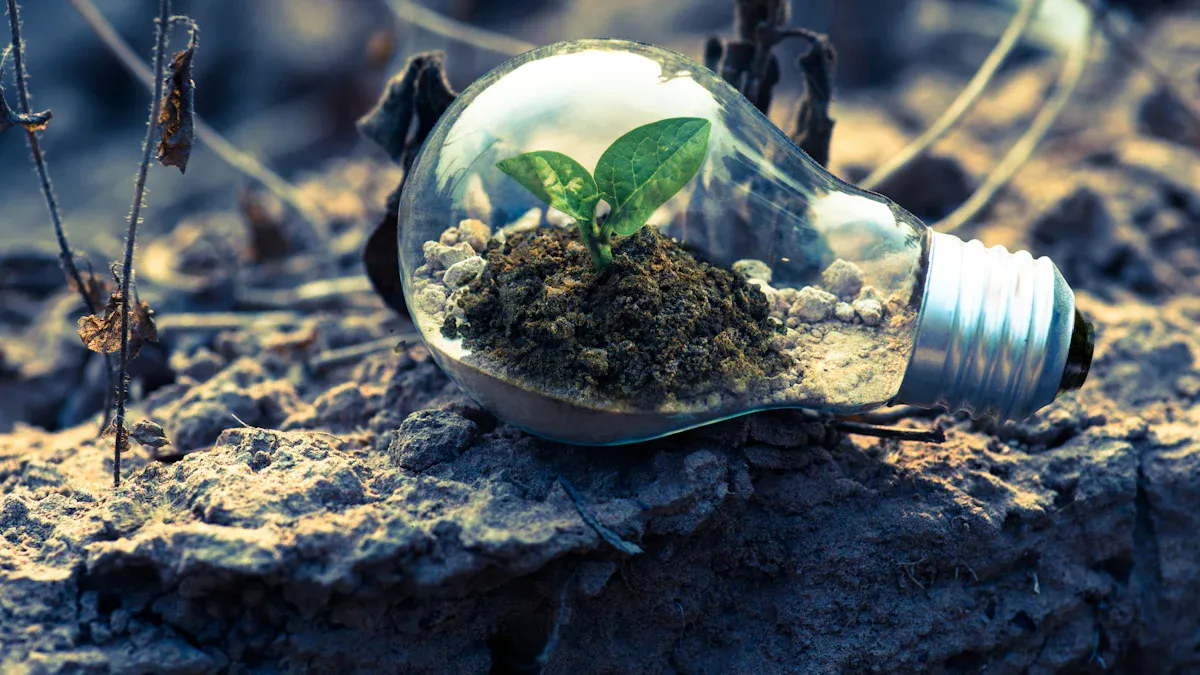
Wire tube condensers play a critical role in advancing green technology by offering energy-efficient and environmentally conscious solutions. The Rtkool CO2 Wire Tube Condenser demonstrates how superior engineering can address the rising demand for sustainable refrigeration. Its innovative design enhances heat transfer by up to 50% compared to traditional condensers, enabling businesses to cut energy costs while improving cooling performance. Durable materials, such as Bundy Tubes, ensure reliability and long-term use. Additionally, compatibility with eco-friendly refrigerants helps businesses comply with strict environmental standards, reducing their carbon footprint effectively.
Key Takeaways
- Wire tube condensers save energy, cutting costs and helping the planet.
- Using CO2 refrigerants in them lowers harm to the environment.
- Strong materials and special coatings make them last longer.
- They need less fixing and cost less to maintain over time.
- These condensers work well in many areas, like food services or green energy.
- Buying them helps businesses follow rules and cut carbon pollution.
Environmental Benefits of Wire Tube Condensers
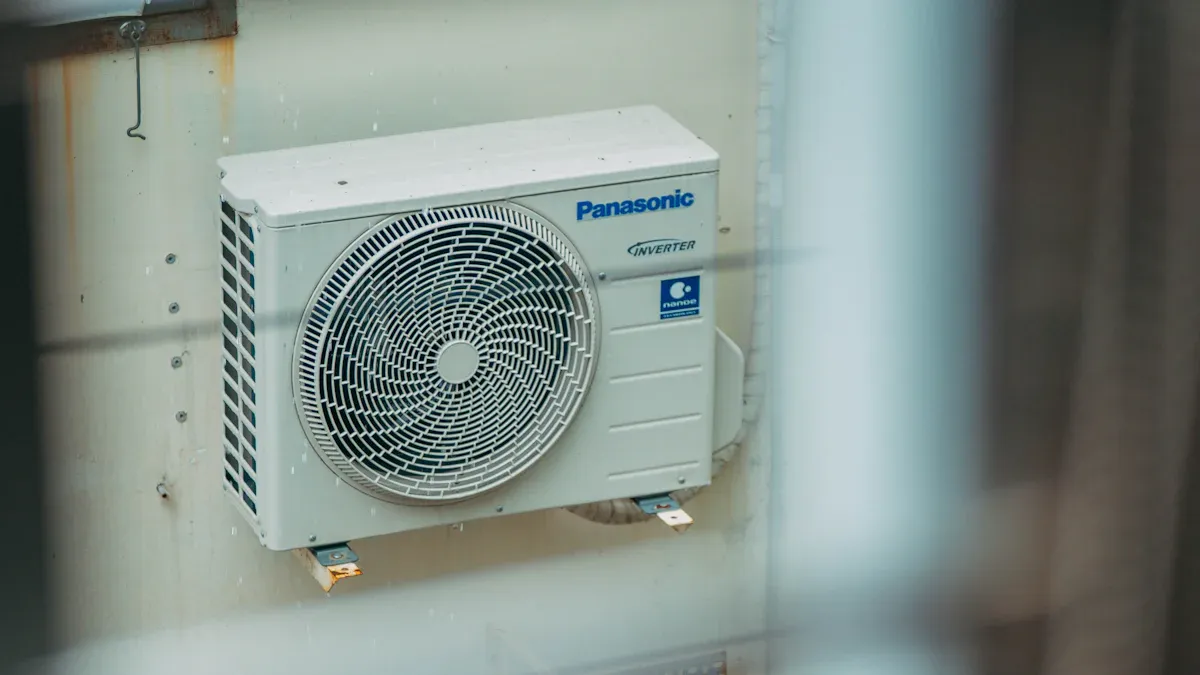
Lower Global Warming Potential with CO2 Refrigerants
Wire tube condensers designed for CO2 refrigerants offer a significant advantage in reducing global warming potential (GWP). Traditional refrigerants, such as hydrofluorocarbons (HFCs), contribute heavily to greenhouse gas emissions. In contrast, CO2 refrigerants have a GWP of just 1, making them a far more sustainable option. By utilizing CO2, these condensers help businesses align with environmental regulations while minimizing their ecological impact. The Rtkool CO2 Wire Tube Condenser exemplifies this shift, providing an energy-efficient solution that supports global efforts to combat climate change.
Tip: Switching to CO2-based refrigeration systems not only reduces environmental harm but also prepares businesses for stricter future regulations on refrigerant usage.
Eco-Friendly Materials and Corrosion-Resistant Coatings
The materials and coatings used in wire tube condensers enhance their eco-friendliness and durability. Copper-nickel alloys, for instance, exhibit exceptional resistance to macrofouling, which reduces the need for frequent cleaning. This property lowers maintenance costs and ensures consistent performance over time. Additionally, the biofouling resistance of copper-nickel tubing allows condensers to maintain effective heat transfer without relying on onboard chlorine generators. These features make wire tube condensers an ideal choice for industries seeking sustainable and cost-effective cooling solutions.
The Rtkool CO2 Wire Tube Condenser incorporates advanced surface treatments, such as electrophoresis coating, to prevent corrosion. This coating ensures the unit remains in excellent condition even in harsh environments, extending its lifespan and reducing waste. By combining robust materials with innovative coatings, these condensers deliver both environmental and economic benefits.
Contribution to Reducing Carbon Emissions
Wire tube condensers play a pivotal role in reducing carbon emissions across various industries. Their optimized heat transfer capabilities minimize energy consumption, which directly lowers the carbon footprint of refrigeration systems. For example, the Rtkool CO2 Wire Tube Condenser achieves superior cooling efficiency, enabling businesses to operate more sustainably. This efficiency translates into fewer greenhouse gas emissions, supporting global sustainability goals.
Moreover, the use of eco-friendly refrigerants like CO2 further amplifies their impact. By replacing high-GWP refrigerants with CO2, businesses can significantly cut their contribution to climate change. These condensers not only meet current environmental standards but also set a benchmark for future innovations in green technology.
Energy Efficiency and Performance
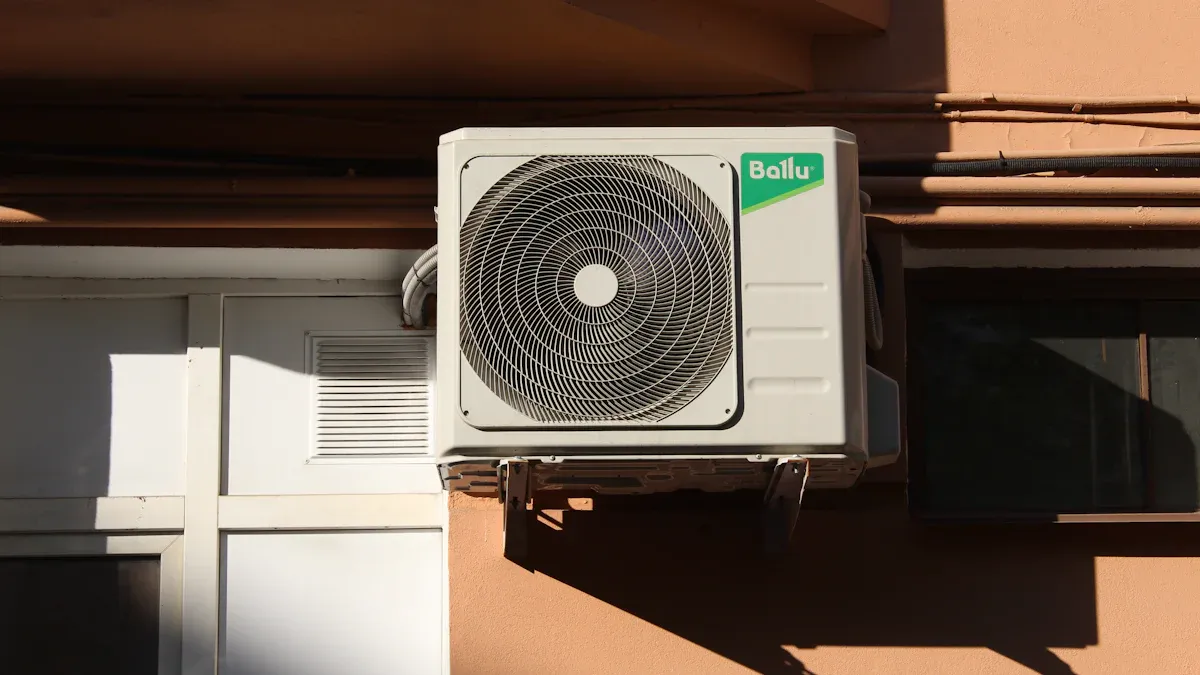
Optimized Heat Transfer for Reduced Energy Use
Wire tube condensers excel in optimizing heat transfer, which directly reduces energy consumption. Their design incorporates advanced features such as smaller diameter, inner-grooved copper tubes, and innovative fin patterns. These elements enhance the efficiency of heat exchange, allowing refrigeration systems to operate with less energy. Businesses benefit from this improved performance, as it lowers operational costs and supports sustainability goals.
The following table highlights key advancements in heat transfer technology and their impact on energy efficiency:
| Case Study Description | Impact on Energy Efficiency |
|---|---|
| Use of smaller diameter, inner-grooved copper tubes in heat exchangers | Improved heat transfer efficiency, leading to reduced energy use |
| Advances in evaporator and condenser coil design | Increased energy efficiency while minimizing material usage |
| Implementation of optimized fin patterns and tube circuitry | Shortened time to market and enhanced product performance |
These innovations demonstrate how wire tube condensers contribute to energy-efficient refrigeration systems. By integrating such technologies, businesses can achieve significant energy savings while maintaining high cooling performance.
Long-Term Cost Savings for Businesses
Investing in energy-efficient wire tube condensers offers substantial long-term cost benefits. Their ability to reduce energy consumption translates into lower utility bills, making them a cost-effective choice for businesses. Additionally, their durability and reliability minimize maintenance expenses, as fewer repairs are required over time.
Key advantages include:
- Reduced energy consumption, leading to lower operating costs.
- Decreased maintenance expenses due to robust construction and minimal wear.
- Long-term savings that offset initial investment costs.
These benefits make wire tube condensers an attractive option for businesses aiming to improve profitability while adhering to eco-friendly practices.
Versatility Across Commercial Applications
Wire tube condensers demonstrate remarkable versatility, making them suitable for a wide range of commercial applications. Their efficient heat transfer capabilities and robust design allow them to perform effectively in diverse environments. From commercial kitchens to retail refrigeration units, these condensers meet the cooling demands of various industries.
Applications include:
- Refrigerators and freezers in food service establishments.
- Display showcases in retail stores.
- Water coolers and other specialized cooling systems.
This adaptability ensures that businesses across different sectors can leverage the benefits of wire tube condensers. Their ability to deliver consistent performance under varying conditions highlights their value as a reliable and sustainable refrigeration solution.
Durability and Reliability
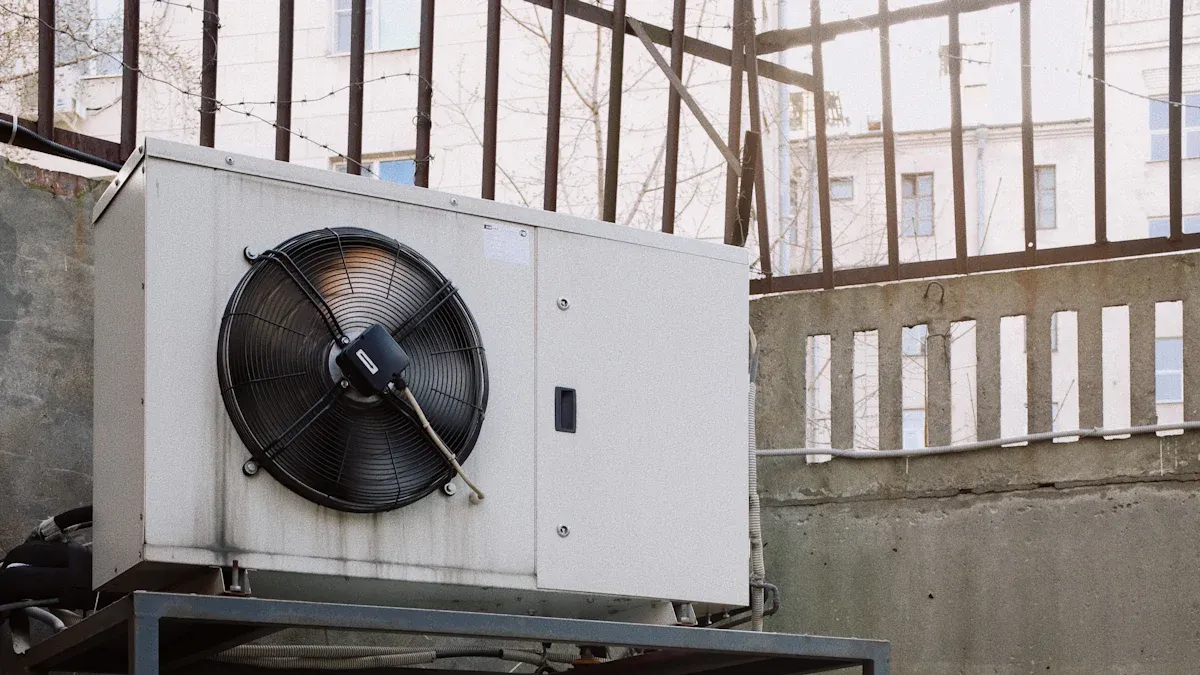
Robust Design for High-Pressure and High-Temperature Environments
Wire tube condensers are engineered to endure extreme operating conditions, making them indispensable in demanding applications. Their robust construction allows them to perform efficiently under high-pressure and high-temperature environments without compromising reliability. The Rtkool CO2 Wire Tube Condenser exemplifies this durability. Its Bundy tube design, combined with low-carbon steel wire and a sturdy steel plate bracket, ensures structural integrity even in challenging scenarios. This resilience makes it a preferred choice for industries requiring consistent performance under rigorous conditions.
Note: A well-designed condenser reduces the risk of system failures, ensuring uninterrupted operations and long-term reliability.
Minimal Maintenance Requirements
The minimal maintenance needs of wire tube condensers contribute to their cost-effectiveness and operational efficiency. Their corrosion-resistant coatings and durable materials reduce wear and tear, minimizing the frequency of repairs. The Rtkool CO2 Wire Tube Condenser incorporates advanced electrophoresis coating, which protects against environmental damage and extends the unit's lifespan. This feature ensures that businesses can focus on their operations without worrying about frequent maintenance interruptions.
Additionally, the condenser's design simplifies cleaning and inspection processes. Its smooth surfaces and efficient layout prevent the accumulation of debris, further reducing maintenance efforts. This ease of upkeep makes it an ideal solution for businesses seeking reliable and hassle-free refrigeration systems.
Longevity Through Advanced Surface Treatments
Advanced surface treatments significantly enhance the longevity of wire tube condensers. The Rtkool CO2 Wire Tube Condenser benefits from electrophoresis coating, which provides a protective barrier against corrosion and environmental wear. This treatment ensures the unit remains functional and efficient over extended periods, even in harsh conditions.
Studies on copper-nickel alloys, such as C71500, highlight the durability of advanced coatings. Key findings include:
- Tubing made from alloy C71500 in U.S. Navy destroyers showed an average failure rate of only 0.008 in auxiliary condensers over 20 years.
- Comparative studies revealed an 85% probability of achieving 20 years of service life with minimal tube loss for certain alloys.
- The protective corrosion film on Cu-Ni alloys contributes to a service life exceeding two decades in marine and coastal environments.
These insights underscore the importance of high-quality surface treatments in extending the lifespan of wire tube condensers. By incorporating such innovations, the Rtkool CO2 Wire Tube Condenser delivers unmatched durability, making it a valuable investment for sustainable refrigeration systems.
Applications in Sustainable Industries
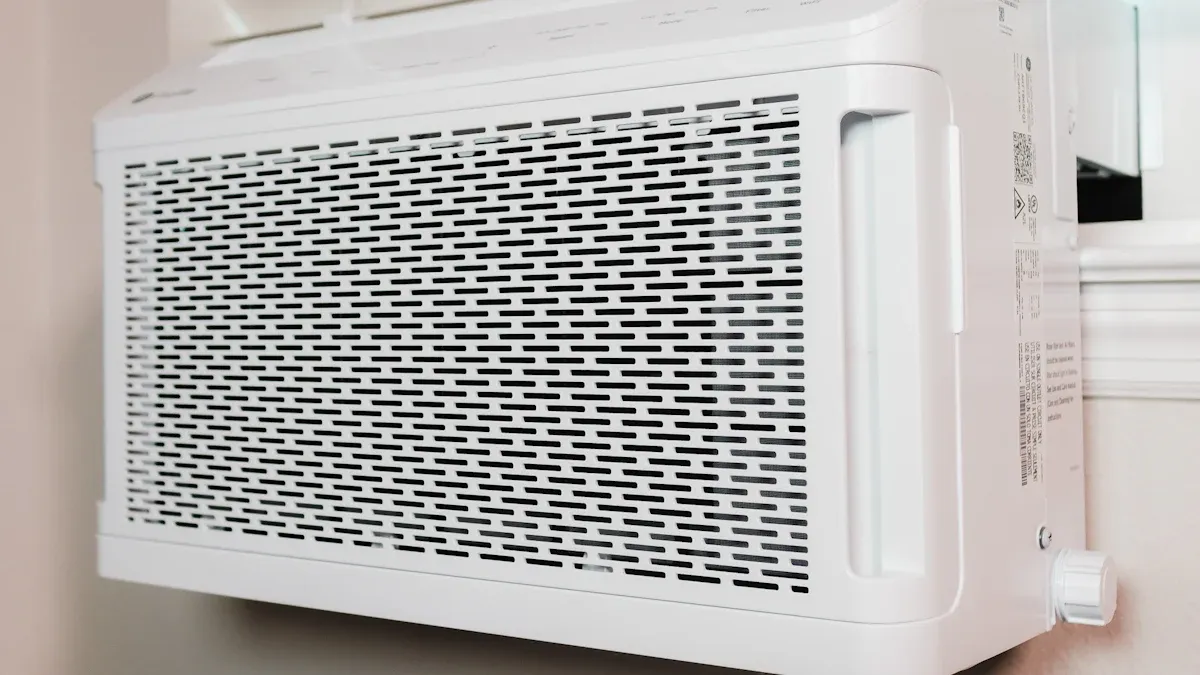
Commercial Refrigeration and Cooling Systems
Wire tube condensers are transforming commercial refrigeration systems by enhancing energy efficiency and reducing environmental impact. Their optimized heat transfer capabilities ensure effective cooling while minimizing energy waste. Businesses in food service and retail industries rely on these condensers to maintain consistent refrigeration performance in refrigerators, freezers, and display showcases.
The Rtkool CO2 Wire Tube Condenser stands out in this sector. Its compatibility with low-GWP refrigerants, such as CO2, aligns with sustainability goals and regulatory requirements. By reducing greenhouse gas emissions, it helps businesses meet environmental standards while lowering operational costs.
Tip: Upgrading to wire tube condensers can improve cooling efficiency and reduce energy bills, making them a smart investment for commercial applications.
Integration in Renewable Energy Solutions
Wire tube condensers are increasingly integrated into renewable energy systems, supporting sustainable cooling solutions. Their ability to operate efficiently under high-pressure and high-temperature conditions makes them ideal for applications such as solar-powered refrigeration units and geothermal cooling systems.
These condensers contribute to the broader adoption of renewable energy by ensuring reliable performance in eco-friendly setups. Their advanced surface treatments, such as electrophoresis coating, enhance durability, allowing them to withstand harsh environmental conditions often associated with renewable energy projects.
🌱 Note: Incorporating wire tube condensers into renewable energy systems accelerates the transition to greener technologies, reducing dependence on fossil fuels.
Role in Eco-Friendly Manufacturing Processes
Wire tube condensers play a pivotal role in eco-friendly manufacturing by improving energy efficiency and reducing carbon emissions. Manufacturers are adopting these technologies to comply with stringent environmental regulations and meet consumer demand for sustainable products.
- Key Benefits:
- Enhanced energy efficiency through low-GWP refrigerants.
- Reduced global warming potential compared to traditional refrigerants.
- Support for sustainability initiatives in manufacturing processes.
- Technological advancements, such as IoT integration, improve production efficiency and product quality.
- Regulatory frameworks drive the adoption of low-GWP refrigerants in wire tube condensers.
- The market is shifting toward energy-efficient technologies, positioning these condensers as essential components in green manufacturing.
Wire tube condensers enable manufacturers to align with sustainability goals while maintaining high system performance. Their innovative design and eco-friendly materials make them indispensable in modern manufacturing processes.
The Future of Wire Tube Condensers
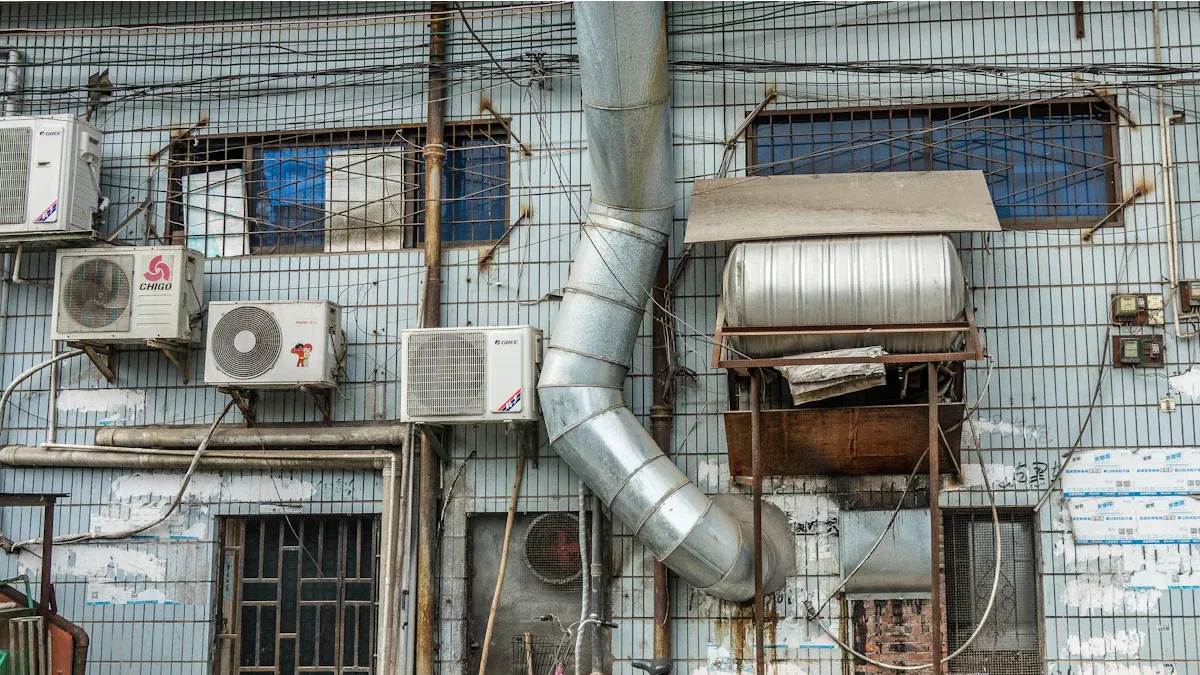
Innovations in Design and Materials
Advancements in design and materials are revolutionizing the capabilities of wire tube condensers. Recent innovations, such as the use of K65 alloy and Cuprofin-C tubes, have demonstrated exceptional performance in CO2 refrigeration systems and tube-side condensation applications. These materials offer enhanced pressure resistance, optimized heat transfer efficiency, and reduced material usage, making them ideal for sustainable refrigeration solutions.
| Feature | K65 Alloy | Cuprofin-C Tubes |
|---|---|---|
| Application | CO2 refrigeration systems | Tube-side condensation of refrigerants |
| Pressure Resistance | Up to 120 bar | N/A |
| Heat Transfer Efficiency | Excellent | Optimized due to fin structure |
| Material Usage | Reduced through design | Low material usage |
| Delivery Forms | Level wound coils, straight lengths | Layer-wound coils, straight lengths |
| Standards | EN 12735-1, EN 14276, ASTM B 1017 | EN 12735-2, ASTM B359 |
These innovations highlight the industry's commitment to improving efficiency and sustainability. By incorporating cutting-edge materials and designs, wire tube condensers are setting new benchmarks for performance and environmental responsibility.
Expanding Use in Emerging Green Technologies
Wire tube condensers are gaining traction in emerging green technology sectors due to their adaptability and efficiency. Several factors are driving this expansion:
- Technological Advancements: The integration of AI and IoT technologies has enhanced the performance and monitoring capabilities of wire tube condensers, making them more efficient and reliable.
- Sustainability and Green Technologies: Regulatory requirements and consumer preferences are pushing industries to adopt eco-friendly products, positioning wire tube condensers as essential components in sustainable systems.
These condensers are increasingly used in applications such as solar-powered refrigeration units and geothermal cooling systems. Their ability to operate under high-pressure and high-temperature conditions makes them indispensable in renewable energy projects. This growing adoption underscores their role in accelerating the transition to greener technologies.
Supporting Global Sustainability Goals
Wire tube condensers are pivotal in achieving global sustainability objectives. Their ability to reduce electricity consumption by up to 30% addresses critical environmental challenges, such as energy efficiency and carbon emissions. Industries relying on stable temperatures, including food preservation and medical cooling, benefit significantly from these advancements.
The rising demand for natural refrigerant systems, which has increased by 50% over the past two years, reflects a strong market trend toward sustainability. By replacing high-GWP refrigerants with eco-friendly alternatives like CO2, wire tube condensers contribute to reducing greenhouse gas emissions. Their role in supporting international climate goals positions them as key players in the future of green technology.
Wire tube condensers, like the Rtkool CO2 model, are vital for advancing energy efficiency and environmental sustainability. Their innovative designs and use of eco-friendly materials ensure long-term reliability and reduced environmental impact. For instance, they incorporate recycled metals and eco-friendly coatings, which minimize harmful emissions and align with global sustainability goals.
| Eco-Friendly Material | Description |
|---|---|
| Recycled Metals | Minimize the environmental impact of mining and processing virgin materials. |
| Eco-Friendly Coatings | Reduce harmful emissions and enhance product sustainability. |
- These condensers withstand harsh environments, ensuring consistent performance.
- Their energy-efficient designs lower electricity consumption and greenhouse gas emissions.
- Recyclable materials contribute to a greener future.
As industries prioritize sustainability, wire tube condensers will remain indispensable in shaping a more eco-conscious world.
FAQ
What makes wire tube condensers eco-friendly?
Wire tube condensers use recyclable materials and eco-friendly coatings, reducing environmental harm. Their compatibility with low-GWP refrigerants like CO2 minimizes greenhouse gas emissions. These features align with global sustainability goals, making them a green choice for refrigeration systems.
🌱 Tip: Opting for eco-friendly condensers supports both environmental and regulatory compliance.
How do wire tube condensers improve energy efficiency?
Their optimized heat transfer design reduces energy consumption by up to 30%. Features like inner-grooved tubes and advanced fin patterns enhance cooling performance while lowering electricity usage. This efficiency benefits businesses by cutting operational costs and supporting sustainability initiatives.
Note: Energy-efficient condensers save money and reduce carbon footprints.
Are wire tube condensers suitable for high-pressure environments?
Yes, wire tube condensers are built for durability. Their robust construction, including Bundy tubes and steel brackets, ensures reliable performance under high-pressure and high-temperature conditions. This makes them ideal for demanding applications in commercial and industrial settings.
What industries benefit most from wire tube condensers?
Industries like food service, retail, and renewable energy benefit significantly. Applications include refrigerators, freezers, solar-powered cooling systems, and geothermal setups. Their versatility and eco-friendly design make them indispensable across various sectors.
How does the Rtkool CO2 Wire Tube Condenser stand out?
The Rtkool Co2 Condenser combines advanced heat transfer, corrosion-resistant coatings, and eco-friendly refrigerants. Its durable design ensures long-term reliability, while its energy efficiency reduces operational costs. These features make it a premier choice for sustainable refrigeration solutions.
💡 Pro Tip: Investing in Rtkool condensers enhances both performance and sustainability.








